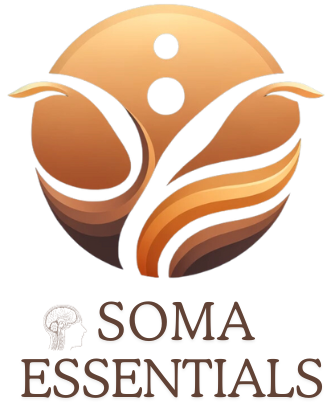Increase Flexibility and Strength with Somatic Exercises
Are you looking to improve your flexibility and strength? Look no further than somatic exercises. These exercises focus on the mind-body connection, helping you to move more efficiently and effectively. With regular practice, somatic exercises can help increase your range of motion and build strength in your muscles. In this article, we will explore the benefits of somatic exercises and how they can help you achieve a greater sense of flexibility and strength. So, if you’re ready to take your fitness journey to the next level, keep reading!
Somatic exercises are a form of mind-body movement that focuses on developing awareness and control of the body. These exercises combine elements of physical movement, breathwork, and mindfulness to enhance flexibility, strength, and overall health. One of the key principles of somatic exercises is the belief that our physical body is closely connected to our emotional state. By improving our physical awareness and control, we can also improve our emotional well-being.
For example, when we are stressed or anxious, our muscles tend to tense up. Through somatic exercises, we can learn how to release that tension and create a more relaxed state of being. This can lead to improved flexibility and strength, as well as a reduction in stress and anxiety.
Somatic exercises can take many forms, including yoga, tai chi, Feldenkrais method, and Alexander technique. Each of these practices incorporates movement, breathwork, and mindfulness to help individuals develop a deeper connection with their bodies.
Yoga is a popular form of somatic exercise that focuses on physical poses, breathwork, and meditation. It has been shown to improve flexibility, strength, and balance, as well as reduce stress and anxiety. Additionally, certain types of yoga, such as restorative or gentle yoga, can be especially beneficial for those looking to increase flexibility and strength without putting too much strain on the body.
Tai chi is a Chinese martial art that combines slow, fluid movements with deep breathing and meditation. It has been found to improve flexibility, balance, and strength, as well as reduce stress and anxiety. It is a low-impact exercise that can be practiced by people of all ages and fitness levels.
The Feldenkrais method is a type of somatic exercise that focuses on improving movement and body awareness through gentle, mindful movements. It can help individuals develop a greater sense of flexibility, strength, and coordination, as well as reduce pain and tension. The Alexander technique is similar to the Feldenkrais method in that it also focuses on improving physical awareness and control through gentle movements.
In conclusion, somatic exercises are a powerful tool for improving both physical and emotional well-being. They can help us develop a deeper connection with our bodies, leading to improved flexibility, strength, and overall health. By incorporating practices such as yoga, tai chi, Feldenkrais method, and Alexander technique into our daily routine, we can reap the numerous benefits of somatic exercises.
Somatic Therapy
Welcome to the world of somatic exercises! Somatic therapy is an integral aspect of this practice, focusing on improving body awareness and self-discovery. Through somatic therapy, individuals can learn to tune into their bodies and better understand their physical and emotional needs.
Through specific movements and exercises, somatic therapy aims to release tension and trauma held in the body, promoting relaxation and improved range of motion. This can lead to increased flexibility and strength, as well as a deeper mind-body connection.
Somatic therapy also incorporates elements of psychology, helping individuals to recognize and break through patterns of stress and tension. By addressing the root causes of physical discomfort, somatic therapy can bring about lasting changes in both the body and mind.
If you’re looking to improve your overall well-being, consider incorporating somatic therapy into your routine. By becoming more attuned to your body and emotions, you can experience a greater sense of self-discovery and empowerment.
Somatic Psychology
Welcome to the world of somatic exercises! If you’re looking to improve your mind-body connection and overall well-being, then you’ve come to the right place. In this article, we will explore how somatic psychology can benefit your mind-body connection and overall health. Somatic psychology is a branch of psychology that focuses on the mind-body connection and the impact of our thoughts and emotions on our physical well-being.
Somatic exercises are a powerful tool for improving our mind-body connection. By engaging in somatic exercises, we can release tension, trauma, and negative emotions that may be stored in our bodies. This can help us to develop a deeper understanding of ourselves and our emotions, leading to better self-awareness and emotional regulation.
In addition, somatic psychology can also help us to retrain our nervous system. By utilizing somatic exercises, we can learn to regulate our autonomic nervous system, which controls our fight or flight response. This can be especially beneficial for those who struggle with anxiety or stress-related disorders.
Overall, somatic psychology offers a holistic approach to improving our well-being. By incorporating somatic exercises into our daily routine, we can enhance our mind-body connection and promote overall health and wellness.
Somatic Movement
Somatic movement is the foundation of somatic exercises, and it involves a deep understanding of how the body moves and functions. It is a gentle, mindful approach to movement that focuses on increasing flexibility and strength by releasing tension and promoting proper alignment.
One of the key principles of somatic movement is the mind-body connection. This means that in order to move efficiently and effectively, we must first be aware of our bodies and how they are feeling. By tuning into our bodies, we can identify areas of tension and stiffness, and work towards releasing them through gentle movements.
Another important principle of somatic movement is slow and mindful movements. Unlike traditional exercise, somatic movements are done slowly and with full awareness. This allows us to tune into our bodies and notice any areas of tension or discomfort that may arise. By moving slowly, we can also better engage the muscles and ensure proper alignment.
In addition to improving physical flexibility and strength, somatic movement also has numerous emotional benefits. By being more connected to our bodies, we can better manage stress, anxiety, and other negative emotions. Somatic movement also promotes a sense of calm and relaxation, which can be beneficial for those struggling with mental health issues.
By incorporating somatic movement into your daily routine, you can enhance both your physical and emotional well-being. Whether you’re dealing with chronic pain or simply looking to improve your overall health, somatic movement can be a powerful tool for achieving your goals.
Incorporating somatic exercises into your daily routine can have numerous benefits for your mind and body. By focusing on developing awareness and control of your body, you can improve your flexibility, strength, and overall well-being. Whether you’re interested in somatic therapy, somatic movement, or somatic psychology, there is something for everyone in the world of somatic exercises. So why not give it a try and see the positive impact it can have on your life?

